The tale of the Tiger vs. Elephant has excited and thrilled wildlife lovers worldwide for centuries. From majestic hunting displays to epic showdowns between two of nature’s greatest forces, this timeless battle of wits and will continues to captivate and inspire us to take a closer look at these fantastic creatures.
So, join us on this adventure into the wild as we explore why these two species are so very different yet hold tremendous respect for each other in the delicate balance they help maintain in nature!
You must have seen stories about Indian Tourists sitting on Elephants, walking through the Jungle on their search for wild Tigers. And there it happened, one Tiger attacked an Elephant.
- In 2004, forest rangers at Kaziranga National Park in the northeastern state of Assam, India, were attacked by a tiger.
- See insights from an interview with forest ranger R. K. Das. And watch the actual Video.
See the incident and Watch the full Tiger Vs. Elephant video below.

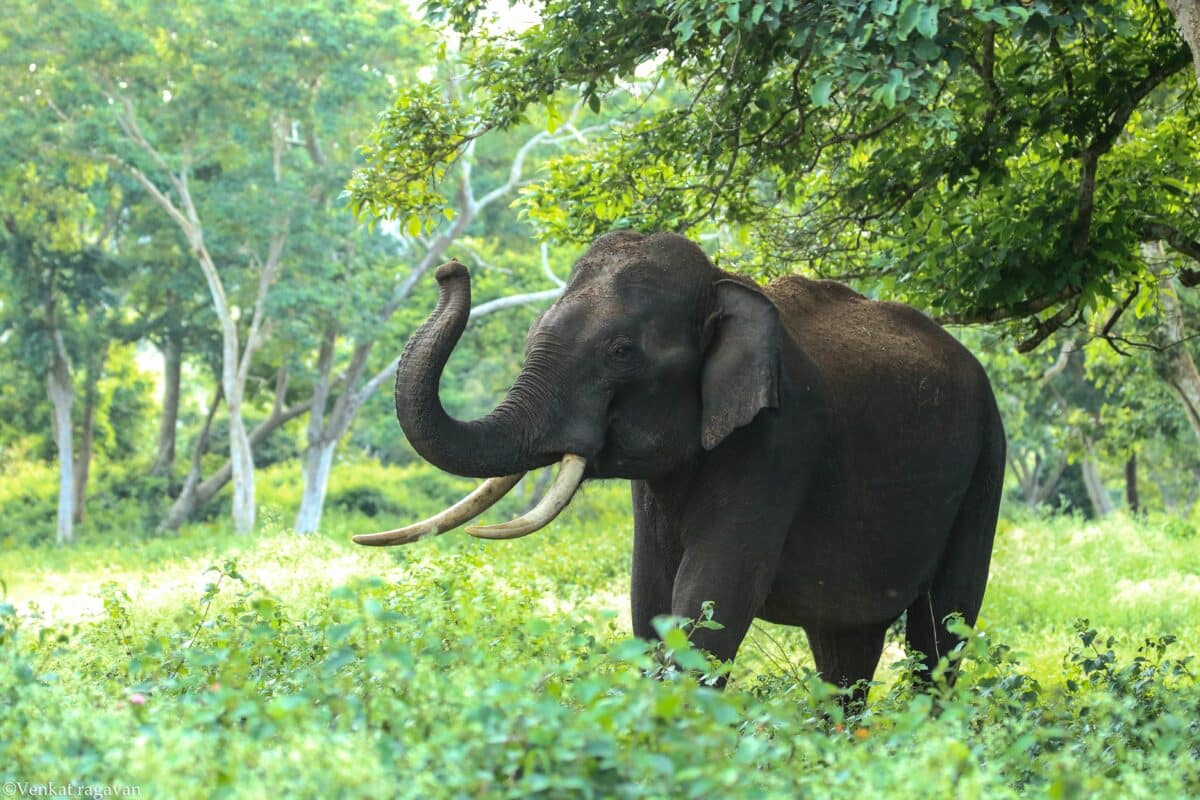
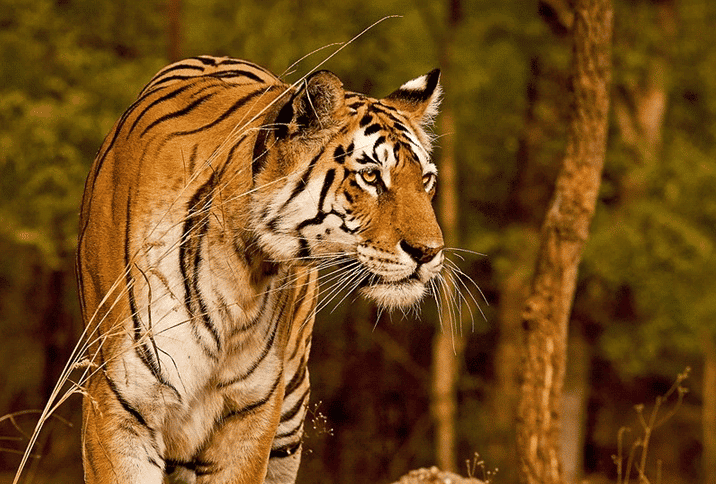

Read more below on this awesome story. Don’t forget to Share With Your Family & Friends.
Also be sure to watch our Tiger and Elephant stories.
Tiger Vs. Elephant Comparison Table
| Features to compare | Tigers | Elephants |
|---|---|---|
| Physical characteristics | Stripes, sharp teeth, claws, can climb trees | Thick skin, tusks, trunk |
| Habitat | Jungle, forest | Grasslands, savannah, forest |
| Diet | Carnivorous, prey on other animals | Herbivorous, consume vegetation |
| Feeding habits | Solitary hunters often hunt at night, opportunistic | Selective feeders, feed in groups |
| Behavioral patterns | Solitary, fiercely defend territories, primarily nocturnal, strong swimming abilities | Social, live in herds, highly intelligent |
| Weight (adult) | 100-700 pounds (45-318 kg) | 5,000-14,000 pounds (2,268-6,350 kg) |
| Length (adult) | 6-10 feet (1.8-3 meters) | 18-30 feet (5.5-9 meters) |
| Bite force (psi) | 1,050 | N/A* |
| Human impact | Poached for skin, bones, and body parts, habitat loss due to deforestation and agricultural expansion | Poached for ivory, habitat loss due to deforestation and agricultural expansion |
Understand The Differences Between A Tiger And An Elephant
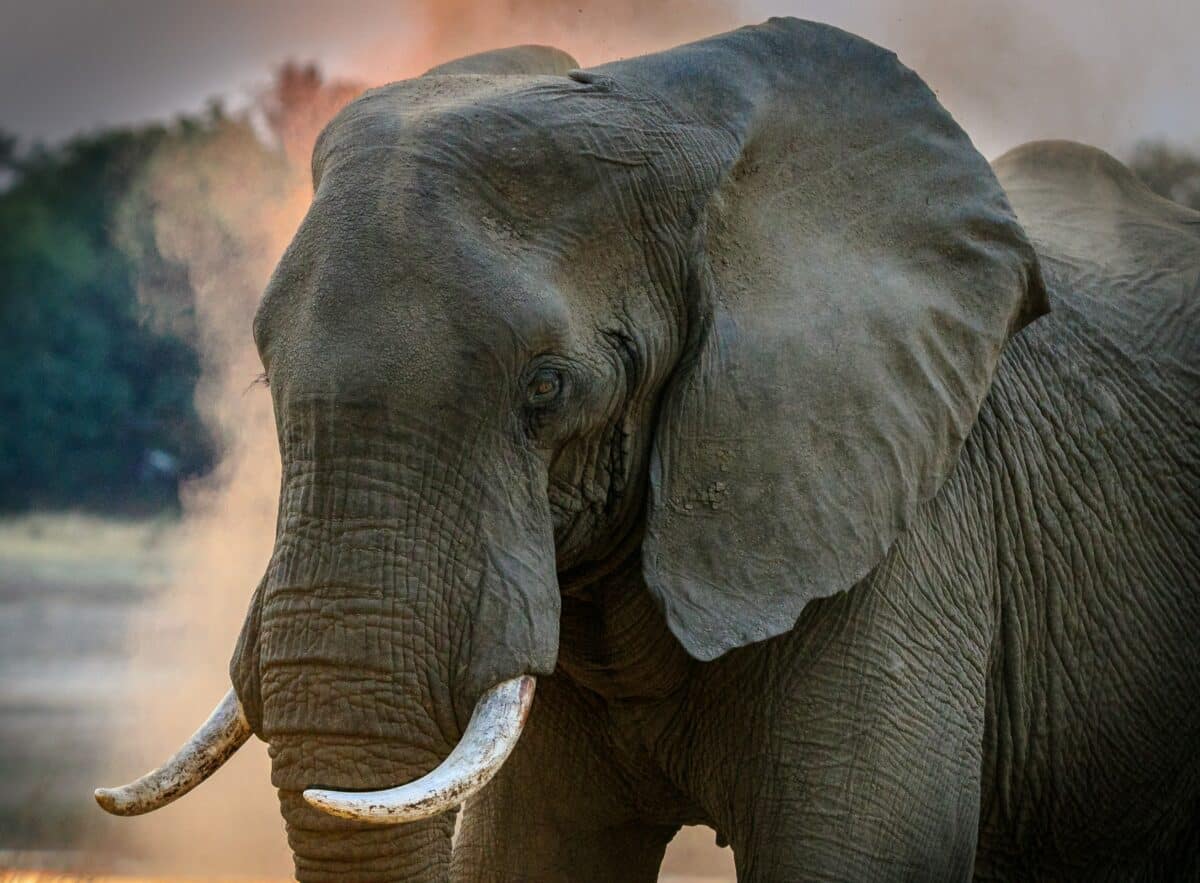
Tigers and elephants may look like they come from different worlds but they share a few striking similarities. For example, both animals have four pillar-like legs used for walking, support large bodies, and live in social groups composed of their species.
However, the differences make them unique and so fascinating to observe. While tigers have stripes that help them blend into their jungle environment and can climb trees during hunts for prey, elephants have thick skin that protects them from harm and have trunks to cool themselves down during hot days and pick up food from the ground. Mos notably, though, the elephant is the largest land animal in the world – click here to find out about the biggest elephant known to man.
Tigers also possess sharper teeth and claws than elephants, allowing them to kill their prey quickly; elephants use their tusks to dig in the ground or remove obstacles. Despite being historically grouped due to their size, tigers and elephants comprise two very diverse species that research continues to uncover more about daily!
Learn About The Habitats Of Both Animals
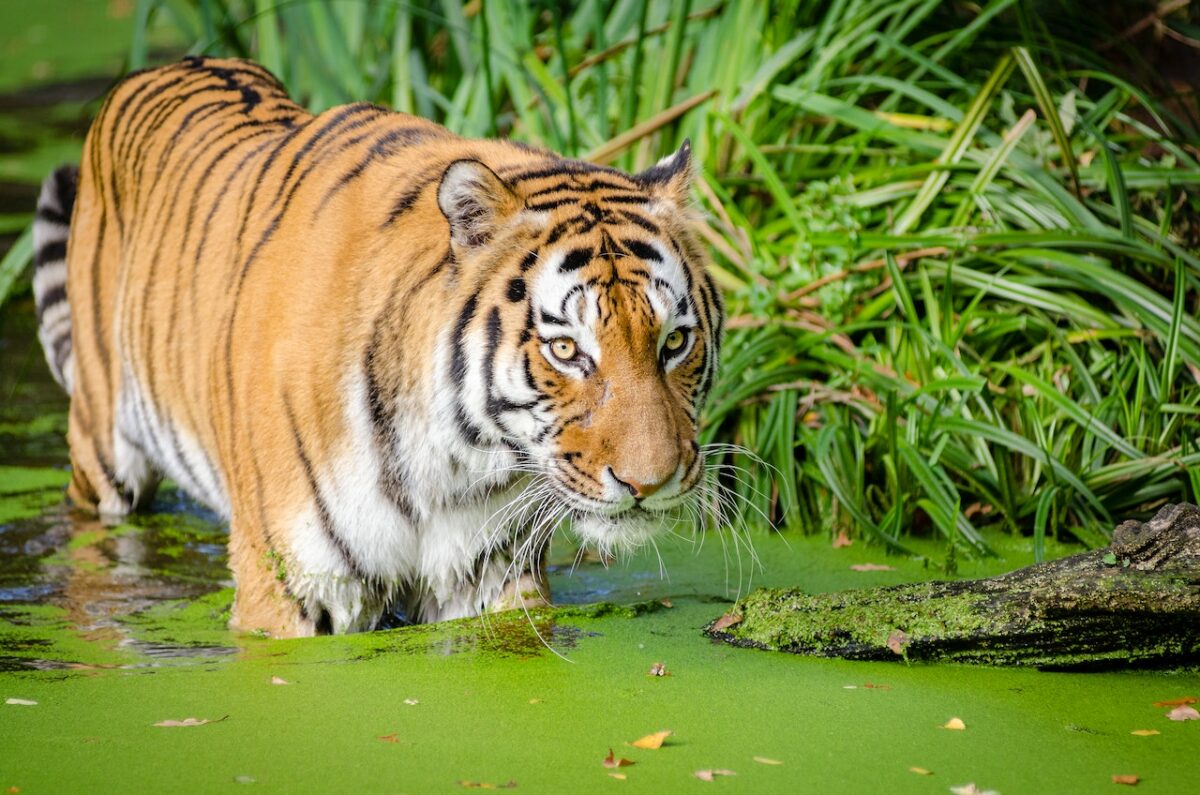
Knowing which animals share habitats and understanding the benefits each species can bring to the other is essential for maintaining a vibrant, healthy ecosystem. For example, mammals like rabbits, badgers, and coyotes often reside in grasslands, while birds such as ducks, geese, and sandpipers inhabit wetlands or lakes.
Each animal contributes to their environment differently – from providing shelter to other smaller critters to helping spread plant life. As such, mammals and birds must be allowed to thrive in their respective habitats. This way, we can ensure a thriving ecosystem for all creatures and ensure our planet continues flourishing for generations.
Comparing Their Diet and Feeding Habits
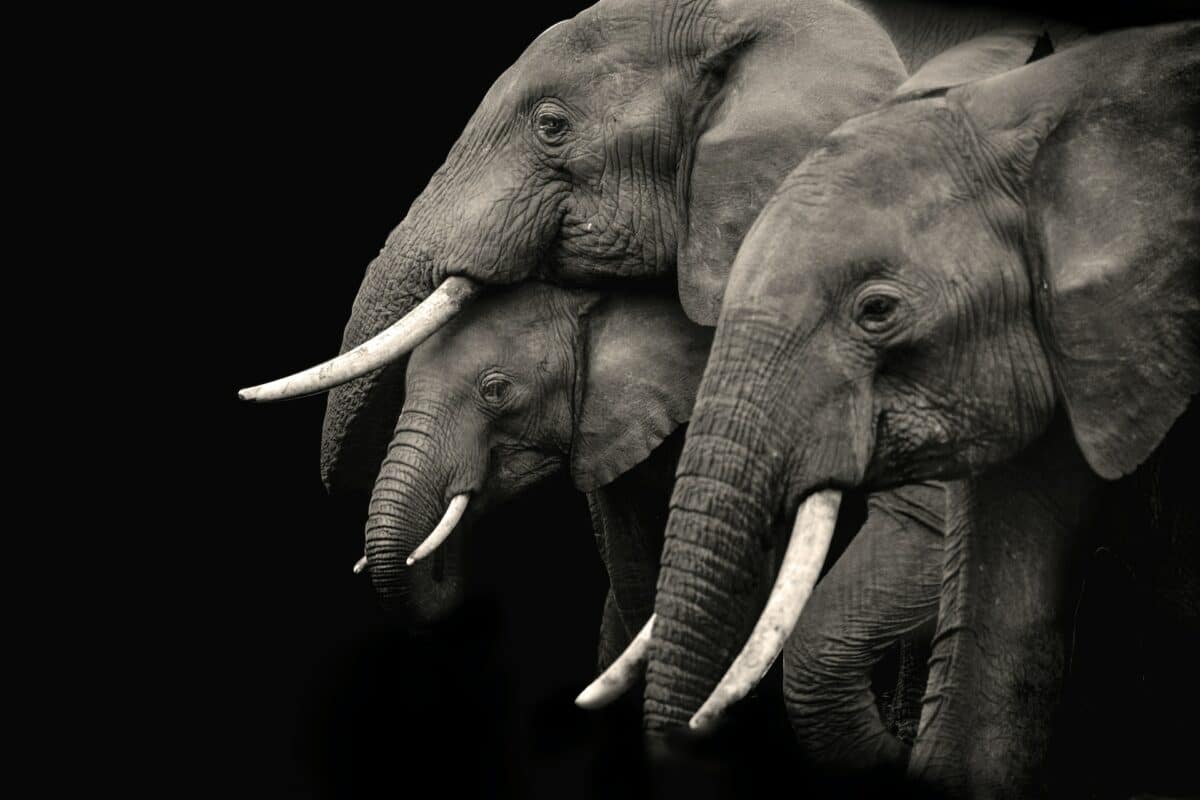
Due to their distinct natural habitats and characteristics, elephants and tigers have vastly different diets and feeding habits. Elephants are herbivores and primarily consume vegetation, while tigers are carnivores that prey on other animals.
Elephants eat up to 300 pounds of vegetation daily, consuming various plants such as grasses, leaves, fruits, and bark. They use their trunks to grab and tear off tree branches and leaves and scoop up grass. Elephants also have specialized teeth for chewing and digesting their plant-based diet.
On the other hand, tigers are carnivores and hunt a wide range of prey, such as deer, wild boar, buffalo, and even smaller animals, such as birds, fish, and reptiles. They are expert hunters with specialized teeth and jaws adapted for grasping, puncturing, and tearing apart their prey. Tigers are also known to be opportunistic and will scavenge on carcasses if needed.
Regarding feeding habits, elephants are known to be selective feeders and often choose specific plants based on their nutritional content and availability; They also have complex social structures and may feed in groups to better access food sources. Tigers are solitary hunters that travel long distances to search for prey and often hunt at night and use stealth and ambush tactics to catch their prey.
In conclusion, elephants and tigers have very different diets and feeding habits based on their natural habitats and characteristics. While elephants are herbivores that consume large amounts of vegetation, tigers are carnivores that hunt a wide range of prey.
Exploring The Behavioral Patterns Of Tigers And Elephants In The Wild
Tigers and elephants are two fascinating animals found in the wild, each exhibiting unique behavior patterns. Tigers are solitary creatures and prefer to live alone, fiercely defending their territories over 100 square kilometers, they are primarily nocturnal and have a keen sense of sight, hearing, and smell, which they use to hunt their prey stealthily. Tigers are also known for their strong swimming abilities and are known to swim long distances to hunt or escape danger.
In contrast, elephants are highly social animals and live in groups called herds. They communicate using sounds, gestures, and touch, exhibiting high intelligence and remarkable memory. Elephants are herbivores, feeding on various vegetation and consuming up to 300 pounds of food daily. They fiercely protect their young and exhibit mourning behavior when a herd member dies. In summary, while tigers are solitary predators that hunt at night, elephants are social herbivores with complex behavior and a strong sense of community.
Consider How Humans Have Impacted Both Animals In Recent Years
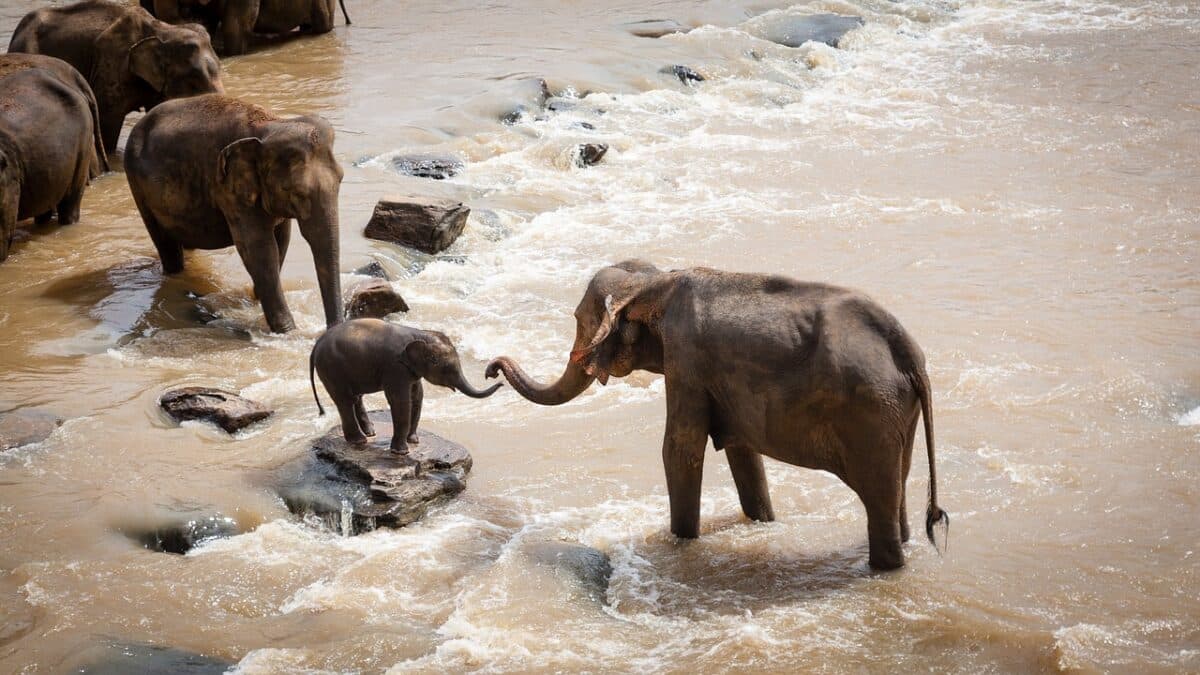
Human impact has significantly affected both tigers and elephants in recent years. People hunt Tigers for their skin, bones, and other body parts, which are medicinal in some cultures. This poaching has severely impacted their populations, and they are now endangered, with only around 3,900 tigers left in the wild. In addition to poaching, habitat loss due to deforestation, agricultural expansion, and human settlements has further decreased their numbers, making it challenging for them to find suitable prey and territories.
Another video of an encounter from Tiger Vs. Elephant.
Elephants have also been impacted by human activity; People hunt elephants for their ivory tusks, which are highly valuable in some parts of the world, leading to the killing of thousands of elephants each year. Habitat loss due to human activity, such as deforestation and encroachment of human settlements, has resulted in the fragmentation of their habitats, making it harder for them to find food and water sources. Elephants are also frequently victims of human-wildlife conflict, as they sometimes conflict with farmers and villagers over resources like crops and water.
People are trying to conserve these magnificent creatures, such as establishing protected areas, implementing anti-poaching measures, and promoting awareness and education about their conservation. Despite these efforts, much still needs to be done to ensure the long-term survival of these animals.
Conclusion on Tiger Vs. Elephant (Video)
In conclusion, they are two very different animals with different needs, from their diets to their habits. Still, both animals suffer from human encroachment on their habitats and poaching of individuals, showing how important it is for us to help ensure their survival.
If we learn about these majestic creatures and the ecosystems in which they thrive, we can make a difference in preserving these beautiful animals for generations.
Do you like Animal Comparisons? We have more articles on Animal Comparisons like this one here.
Join our Forum for free today!

- These are The 5 Largest Great White Sharks Ever Recorded - July 19, 2024
- The Surprising Benefits of Big Game Hunting - July 18, 2024
- $100k+ Hunting Experiences The Most Expensive Animals to Pursue - July 17, 2024



